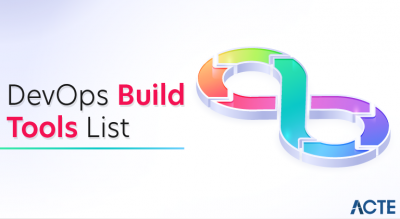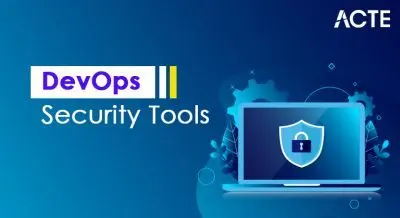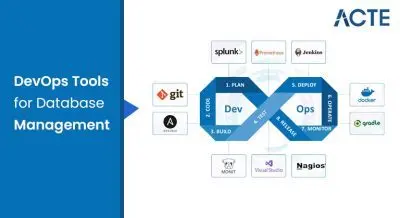
- Introduction to DevOps Engineering
- Key Responsibilities of a DevOps Engineer
- Essential DevOps Skills and Tools
- CI/CD Pipeline Implementation
- Infrastructure as Code (IaC) in DevOps
- Monitoring and Logging in DevOps
- Security and Compliance in DevOps
- DevOps in Cloud Computing Environments
- DevOps Engineer Career Path
- DevOps Engineer Salary Trends
- Challenges Faced by DevOps Engineers
- Future of DevOps Engineering
Introduction to DevOps Engineering
DevOps engineering is a practice that integrates software development (Dev) with IT operations (Ops), aiming to shorten the systems development life cycle and provide high-quality software delivery. The primary goal of DevOps is to improve collaboration between developers and operations teams, automate manual processes, enhance efficiency, and ensure faster product releases while maintaining stability and security. DevOps engineering involves the use of various methodologies, practices, and tools that streamline development, DevOps Training , and monitoring processes. DevOps Engineers work across the entire software development lifecycle, from development and deployment to maintenance and monitoring, ensuring the continuous improvement of systems.
Key Responsibilities of a DevOps Engineer
A DevOps Engineer is responsible for bridging the gap between software development, operations, and system administration. The role often requires a mix of development, system administration, and automation skills. Some of the core responsibilities of a DevOps Engineer include:
- Automation of Deployment Processes: DevOps Engineers design, implement, and maintain continuous integration/continuous deployment (CI/CD) pipelines to automate the build, test, and deployment processes, ensuring faster and more reliable software delivery.
- Infrastructure as Code (IaC): They use IaC tools to automate the provisioning and management of infrastructure, ensuring that the infrastructure is consistent, reproducible, and scalable.
- Monitoring and Troubleshooting: DevOps Engineers are responsible for the proactive monitoring of systems and applications, identifying performance issues, and troubleshooting incidents to ensure the stability and performance of production environments.
- Collaboration and Communication: DevOps Engineers facilitate communication between development, testing, and operations teams to ensure smooth collaboration, particularly in agile development environments.
- Configuration Management: Devops vs Agile maintain and manage system configurations, ensuring consistency across environments and automating repetitive tasks, often using tools like Ansible, Puppet, or Chef.
- Security Implementation: Security is integrated throughout the DevOps lifecycle. DevOps Engineers implement security controls, manage access permissions, and ensure compliance with industry standards and regulations.
- Performance Optimization: Ensuring that applications run efficiently and meet performance targets by optimizing code and infrastructure.
Become a Devops expert by enrolling in this Devops Online Training today.
Essential DevOps Skills and Tools
A successful DevOps Engineer requires proficiency in a variety of tools and skills across development, deployment, and operations. Some key skills and tools include:
Skills:
- Automation: Knowledge of automation tools for continuous integration, deployment, and infrastructure management.
- Version Control Systems: Expertise in version control systems like Git for managing source code and collaborating with development teams.
- Cloud Platforms: Familiarity with cloud environments like AWS, Microsoft Azure, or Google Cloud, which are widely used in modern DevOps lifecycle workflows.
- Scripting and Programming: Proficiency in scripting languages like Python, Shell, or Ruby for automating tasks.
- Networking: Understanding network configurations, protocols, and connectivity to manage cloud infrastructure and distributed systems effectively.
- Collaboration: Strong communication and team collaboration skills to work with cross-functional teams (development, QA, and operations).
Tools:
- Jenkins: A popular automation tool for implementing CI/CD pipelines that help in continuous testing, integration, and deployment.
- Docker: A containerization tool Devops Engineer Roles and Responsibilities simplifies application deployment by creating isolated environments for running applications.
- Kubernetes: An open-source container orchestration platform that automates the deployment, scaling, and management of containerized applications.
- Terraform: An IaC tool that allows DevOps Engineers to define and manage infrastructure in a declarative configuration language.
- GitLab: An integrated DevOps platform that provides source code management, CI/CD, and monitoring capabilities.
- Ansible: A configuration management tool that automates the provisioning of infrastructure and management of software development configurations.
- Prometheus: A monitoring and alerting toolkit used to gather and process metrics, providing insights into the health and performance of applications.
- Nagios: A comprehensive monitoring solution for system and network infrastructure.
- ELK Stack: Elasticsearch, Logstash, and Kibana used for monitoring, logging, and visualizing application performance and system metrics.
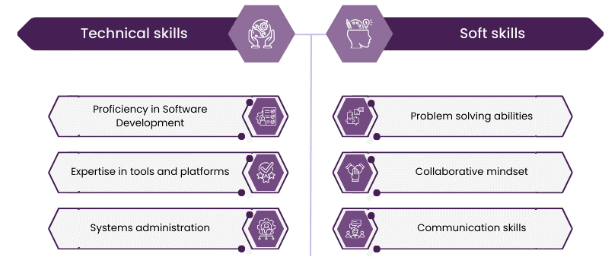
CI/CD Pipeline Implementation
CI/CD (Continuous Integration and Continuous Deployment) is at the heart of DevOps engineering. A CI/CD pipeline automates the process of integrating code changes, running tests, and deploying the code to production systems. DevOps Engineers play a key role in designing and implementing these pipelines. The typical steps of a CI/CD pipeline are, Code Commit Developers commit their code changes to a version control system like Git. Continuous Integration When a change is detected in the repository, the code is automatically pulled and integrated into the build system. Docker Images and Containers runs unit tests to ensure that the changes don’t break existing functionality. Build The system compiles the code and creates an executable version (e.g., JAR, Docker image). Automated Testing: After the build, automated tests (unit tests, integration tests, etc.) are executed to verify the correctness of the code. Deployment: If the tests pass, the code is deployed to the staging or production environment automatically, often with minimal human intervention. Monitoring and Feedback The system continuously monitors the deployed application, collecting data about performance, errors, and other metrics. Feedback is provided to the development team to address any issues quickly. The goal of CI/CD is to increase development velocity and reduce errors by automating repetitive tasks and ensuring that code is always in a deployable state.
Infrastructure as Code (IaC) in DevOps
Infrastructure as Code (IaC) is a crucial practice in DevOps lifecycle that allows infrastructure (e.g., virtual machines, networks, storage) to be managed through code rather than DevOps Training . By writing configuration files (e.g., using JSON, YAML, or HCL), DevOps Engineers can automate the creation and management of infrastructure. Popular IaC tools include Terraform, AWS CloudFormation, and Ansible. IaC has the following benefits:
- Consistency: Ensures that the infrastructure is created and managed in a consistent and repeatable way across different environments (dev, staging, production).
- Version Control: Infrastructure code can be stored in version control systems, enabling teams to track changes, collaborate, and roll back configurations when necessary.
- Scalability: Makes it easier to scale infrastructure as needed, using automation to add or remove resources dynamically.
- Cost Efficiency: With IaC, teams can spin up or shut down resources quickly, avoiding unnecessary resource usage.
- Monitoring: DevOps Engineers use monitoring tools like AWS Devops Tools for Cloud Build and Deployment , Grafana, and Datadog to track the health and performance of infrastructure and applications. Monitoring helps with understanding system utilization, detecting downtime, and tracking application performance over time.
- Logging: Tools like ELK Stack (Elasticsearch, Logstash, Kibana) and Splunk are used for collecting, storing, and analyzing logs. Logs provide insights into system behaviors, errors, and transaction traces, which are vital for debugging and improving performance.
- Automated Security Testing: Implementing static and dynamic analysis tools to test for vulnerabilities in the code.
- Infrastructure Security: Using encryption, firewall rules, and access control policies to secure cloud and on-premises infrastructure.
- Continuous Monitoring: Employing security monitoring tools to detect intrusions, unauthorized access, or other security breaches.
- Compliance Automation: Automating compliance checks to ensure adherence to regulatory standards like GDPR, HIPAA, or SOC 2.
- Entry-level DevOps Engineers earn an average salary of $80,000–$100,000.
- Mid-level DevOps Engineers can earn between $100,000 and $130,000.
- Senior DevOps Engineers can expect to earn over $150,000 annually, with some positions in high-demand regions reaching $180,000 or more.
- Edge Computing: With the rise of IoT, edge computing will allow for distributed scalability by processing data closer to the source, reducing latency and bandwidth requirements.
- AI-Powered Scaling: Artificial intelligence and machine learning will play a more significant role in optimizing resource allocation, allowing for predictive Scaling Capabilities based on usage patterns and demand forecasts.
- Hybrid Cloud Solutions: Businesses will increasingly adopt hybrid cloud strategies, combining on-premises infrastructure with cloud resources to achieve greater flexibility and scalability.
- Complexity in Toolchains: Managing and integrating multiple tools for CI/CD, monitoring, and infrastructure can be overwhelming.
- Balancing Speed and Quality: DevOps aims for faster delivery, but this can sometimes conflict with the need for thorough testing and code quality.
- Cultural Resistance: Shifting from traditional IT practices to DevOps requires a cultural change, which can be met with resistance from teams accustomed to old workflows.
Advance your Devops career by joining this Devops Online Training now.
Monitoring and Logging in DevOps
Effective monitoring and logging are essential for DevOps Engineers to ensure that applications and infrastructure are running smoothly. These practices help identify performance bottlenecks, detect anomalies, and troubleshoot issues in real time.Together, monitoring and logging form the backbone of a reliable system, providing visibility into system operations and aiding in swift problem resolution.
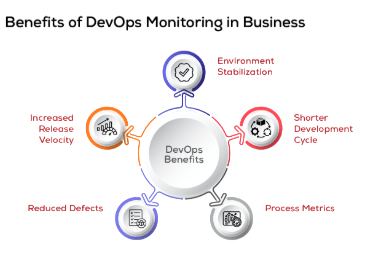
Security and Compliance in DevOps
Security is an integral part of the DevOps process, and DevOps Engineers need to incorporate security practices throughout the development lifecycle. This is known as DevSecOps, where security is embedded into every phase of the CI/CD pipeline. By integrating security from the start, DevOps Engineers can significantly reduce the risks of breaches and Why Devops and How It Works For Federal Agencies .
Key practices include:
Ready to excel in Devops? Enroll in ACTE’s Devops Master Program Training Course and begin your journey today!
DevOps in Cloud Computing Environments
Cloud platforms like AWS, Azure, and Google Cloud are integral to the success of DevOps, providing the resources, scalability, and automation needed for continuous delivery. Cloud services facilitate Elasticity: Quickly scale infrastructure up or down based on demand. Serverless Architectures: Reduce operational overhead by using serverless services like AWS Lambda or Azure Functions. Managed Services Cloud providers offer managed services for databases, storage, and containers, which allow DevOps Engineers to focus on development and automation instead of infrastructure management.
DevOps Engineer Career Path
A career as a DevOps Engineer can be Docker Container , with a clear growth trajectory. Starting as a Junior DevOps Engineer, professionals can progress to Senior DevOps Engineer, Lead DevOps Engineer, or DevOps Architect, with opportunities to specialize in cloud architecture, automation, or security.
DevOps Engineer Salary Trends
DevOps Engineers are in high demand, with competitive salaries reflecting the skill set required for the role. As of recent data:
Future of Scalability in Cloud Computing
The future of scalability in cloud computing will continue to evolve, with trends like:
Challenges Faced by DevOps Engineers
DevOps Engineers face several challenges:
Are you getting ready for your Devops interview? Check out our blog on Devops Interview Questions and Answers!
Future of DevOps Engineering
The future of DevOps looks promising, with continued growth in automation, cloud technologies, and continuous delivery practices. The integration of AI, machine learning, and advanced monitoring systems will further enhance DevOps practices, making them more efficient and reliable. Additionally, the rise of DevOps Training will continue to push for security to be an integral part of the DevOps lifecycle, ensuring that cloud applications are both fast and secure. The demand for skilled DevOps Engineers is expected to remain high as businesses increasingly adopt cloud technologies and DevOps methodologies to remain competitive.


